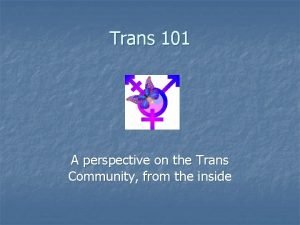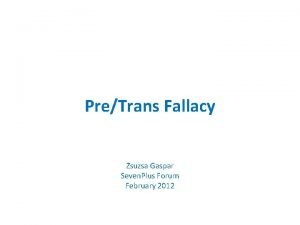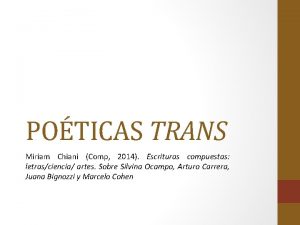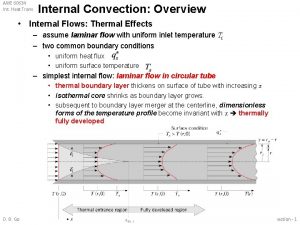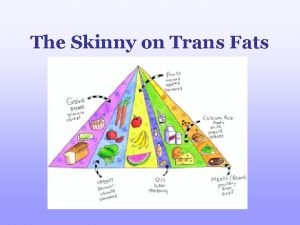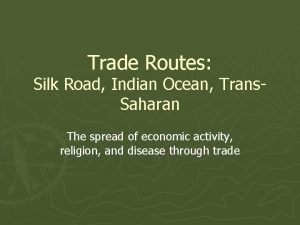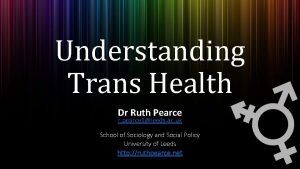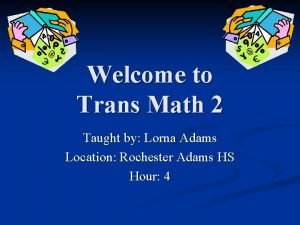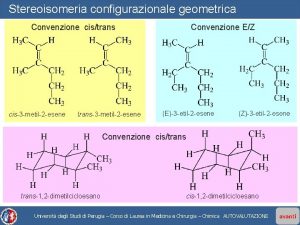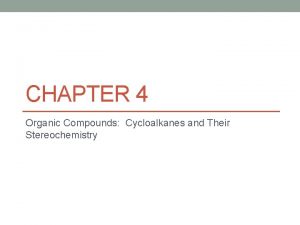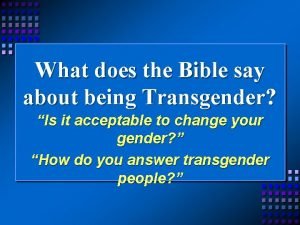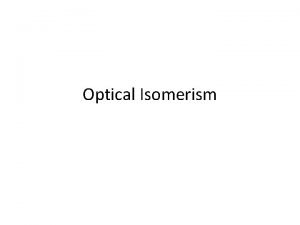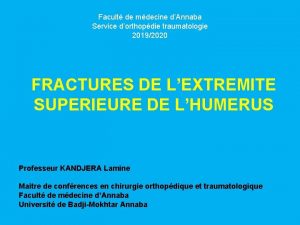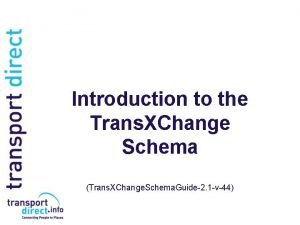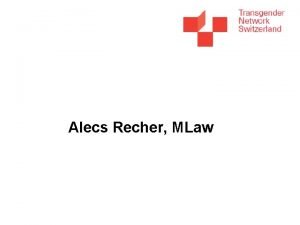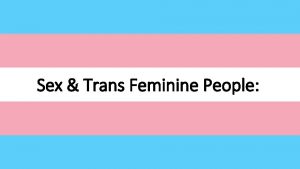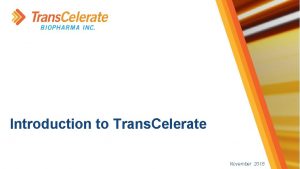Trans 101 A perspective on the Trans Community

















































































- Slides: 81

Trans 101 A perspective on the Trans Community, from the inside

What is Normal? n n Any behavior that adversely impacts the lifestyles, rights or freedoms of others, an/or generates a climate of fear or danger to other individuals is Abnormal. Conversely, if these adverse conditions are not in place, the behavior or lifestyle of an individual would be, within broad parameters, normal.

Elements of Transgenderism n n n Transvestite Cross-Dresser Non-op Transsexual/Transgender Pre-op Transsexual Post-op Transsexual Drag Queen-Drag King

Variations n n As in all aspects of life and creation, there are no absolutes. The preceding categories are for the most part linked with gray areas in between. Each group can easily display some elements of another, but for the most part, the traits given for each group are well established. These conclusions are arrived at after decades of both observation and study, research, and more importantly, living the life personally.

Transvestite n n Defined as somebody who dresses in the clothing of the other* sex for sexual gratification. This is often associated with fetish behavior, with focus on one or more items of clothing associated with the other* sex. Transvestites are generally heterosexual males, and their behavior is most often restricted to the privacy of their own homes, but they might also wear lingerie under their male clothing.

n The mind-set of the Transvestite is predominately masculine. Even when dresses in the clothing of choice, behavior can still be highly masculine. This “group” is also more prone to fetish behavior, centered around the erotic feeling derived from the clothes, and can include more extreme sexual activities, including bondage, sissy and infant behavior, and sado-masochistic acts.

Cross-Dressers n n n More Binary in behavior and thinking, classic Cross-Dressers live dual lives. More bi-gendered in emotional and/or sexual nature. When dressed as women, they will generally associate with other Cross-dressers, and often engage in flirtatious or even outright sexual behavior with men. When dressed as men, they will behave in typically male behavior with no hint of feminism.

n n n Cross-Dressers as a group generally declare themselves as heterosexual, even when they engage in homosexual behavior (only while dresses as women). Many Cross-Dressers are married, often with children, and their feminine life-style will be separate from normal family activities. Cross-Dressing is done as an emotional escape/release from an otherwise oppressive masculine life. This is also a means to more fully explore the other sex.

n The term Cross-Dresser is used more often today than transvestite, in part to separate it from the stigma associated with the more clinical term, and also to detach it from the “fetish” association applied to the term transvestite.

Non-op Transgender/Transsexual n n Unlike the Cross-Dresser, the Transgender/Transsexual is compelled by emotional and physiological pressures to adopt the gender of their brain in a visual manner, as well as engaging in a social life in the gender of choice. The sexual interests of the Non-op TG/TS is generally driven by their perceptions of self, but can cover a wide range of variations.

n n n The Non-op TG/TS, while strongly identifying with the other* sex/gender, may or may not also seek to alter the body with the use of hormones, but nevertheless will seek to live openly as their gender of choice. Many TG’s will still live a “partial” life as a woman, often dictated because of career or family constraints. Such “transition” will seek to establish an identity of the preferred gender as much as the law will allow.

n n n Many Non-op TG/TS’s may also remain married after they “transition” their lifestyle. The male to female TG/TS may then identify as lesbian, while the female to male as gay, even when their partners/spouses do not. Non-op TG/TS are generally diagnosed as having Gender Identity Disorder, GID. For many Pre-op Transsexuals, this is the first major step in their further “transition”.

Pre-op Transsexual n n While presenting all the same characteristics of the Non-op TG/TS, the Pre-op feels the need to alter the physical body as well, to match the brain. All efforts will be made to achieve this goal. This psychological and physiological shift usually is associated with a rejection of everything connected with the birth gender/sex.

Post-Op Transsexual n Once having achieved Sexual Reassignment Surgery, this group is medically classified as the new gender/sex of choice. For the male to female, this entails removal of all outward male genitalia and the creation of female genitalia. The opposite applies to the female to male.

n n Once surgery has been achieved, many Post-op Transsexuals attempt to meld into the general population with the desire to achieve a “normal” lifestyle in their new sex. Often, because of the prejudices of the male dominated society, many transsexuals find their conversion difficult and many are not as openly accepted as they desired.

Transgenders in the world n Native American Two Spirit n Male to female or female to male, regarded as sacred souls and shaman or holy people. n Native American concepts of gender and sexual orientation n By Sandra Laframboise and Michael Anhorn n The two-spirited person is a native tradition that researchers have identified in some of the earliest discoveries of Native artifacts. Much evidence indicates that Native people, prior to colonization, believed in the existence of cross-gender roles, the male-female, the female-male, what we now call the two-spirited person. n n In Native American culture, before the Europeans came to the America's, "two-spirit" referred to an ancient teaching. This type of cross-gender identity has been documented in over 155 tribes across Native North America (Roscoe 1988).

Transgenders in the world n Native American Two Spirit n Our Elders tell us of people who were gifted among all beings because they carried two spirits, that of male and female. It is told that women engaged in tribal warfare and married other women, as there were men who married other men. These individuals were looked upon as a third and fourth gender in many cases and in almost all cultures they were honoured and revered. Two-spirit people were often the visionaries, the healers, the medicine people, the nannies of orphans, the care givers (Roscoe 1988). They were respected as fundamental components of our ancient culture and societies. This is our guiding force as well as our source of strength.

Transgenders in the world n Hijras n The Indian transgender hijras or Aravanis ritually marry the Hindu god Aravan and then mourn his ritual death (seen) in an 18 -day festival in Koovagam, India. n Every spring, thousands of hijras (as male-to-female transgender people are known in India), eunuchs and cross-dressers from all over India and neighboring countries flock to the southern Indian village of Koovagam, for Hindu festival celebrating transgender people. n The two day festival at Koothandavar Temple is held in honor of the Hindu deity Aravan (also known as Iravan), who is believed to be the patron god of transgender communities.

Transition n n While this term is usually applied to somebody who has changed their sex from one to the other, there is a broader meaning as well; anybody who has transitioned from one “lifestyle” to the other, thus living openly as the “other” gender. This could apply in this way to a non-op TS/TG who is living fully as the other gender, even when surgery is not in the “plan”. They have transitioned as far as they need to.

Drag Queens-Drag Kings n n While this form of cross-dressing is not done for emotional or sexual reasons, it is done for entertainment purposes. Drag Queens are generally associated with gay males who dress in “drag” to perform an exaggerated expression of womanhood. Female Impersonators are generally straight men, but not exclusively. The Drag King is a female, usually a butch lesbian, who adopts the image of the man, but unfortunately, this image usually goes unnoticed since woman wearing male attire is more “acceptable” in our society.

Social Perceptions n n n For all such gender variants, in public circles they preferred to be addressed by their visual expression of gender/sex. Male to Female’s should be called She, Her, Ma’am, Miss or Ms. Female to Male’s should be called He, Him, Sir, etc.

n n n The primary desire for the Transgender/transsexual is to live a normal life in their gender of choice, with the freedom and social acceptability of anybody else. They desire to work without discrimination, in whatever field they are best suited for or have passions in. They wish to be treated just like anybody else, accepted at face value and appreciated for what’s inside, and not judged for the choices they have had to make to achieve their peace of mind and contentment within their own souls.

Commonly asked Questions n Why? This question is usually at the heart of all confusions towards the transgender community, especially regarding male to female’s. The basic answer is both simple and complicated. Each individual has their own specific “journey”, but the overall response is “Because”. They are born with a female brain, with a psychological, emotional and physiological concept of self as female. It is not a choice, but a necessity to survival to achieve a reconciliation between brain and body, or at least for the Non-op, the brain and the social/visual expression. People do not “choose” to be Transgendered. They just are.

n Given a world where being male has such huge advantages, why would anybody willingly and deliberately denounce and reject that status to live as, or become female? It is a need to be who they are in their brains. To do otherwise is to deny themselves. There is no choice involved, other than the choice to live how the brain tells them to live, or risk possible insanity.

n When did you first realize you were different? Many TG/TS’s sense this at a very early age. That doesn’t necessarily mean they understand what’s different; just that they know they are. Something in life will then become the trigger, and a certain clarity will come. Still, most “know” something is different from very early childhood, usually around age 3 to 5. Conventional male activities will seem “wrong”, and even the manner of dress will be “uncomfortable”.

n n While some children find it possible to openly express this early, others might try and deny their feelings because of family dynamics, and struggle to live a life determined by their outward appearance rather than their inner perceptions. This often leads to unhappy or tragic results. Many “late bloomers” may come to acceptance as adults, thus making their decisions to “transition” as they see the need. Later life “transitions” usually prove more difficult, both physically and socially.

n Does this make you happy? The concept of happiness is always subjective, and while a Transgender/transsexual might not find “happiness” in life by transitioning from one visual gender/sex to the other, a degree of peace and contentment is achieved by most. It is this peace of mind that helps them better function in society and in relationships, and brings a level of stability to them emotionally and psychologically.

n n When you remove the oppressive mantle of fear, both of “discovery” and of “society” from the Transgender/transsexual, and they feel a sense of normalcy and security in their lives, greater productivity is achieved, and the individual has a more positive outlook on life in general. Even their own spiritual self improves as they feel a greater sense of self-worth and personal value. For many TG/TS’s, once they have “come out”, they feel like a massive weight has been removed from their soul, and experience a kind of “rebirth”.

Sex, Gender, Sexual Preference n Sex is what’s between the legs. This is how we are physically, either male, female, or intersexed, determined by the biological aspects of sexual organs and body types. n This is also influenced by our genes and chromosomes. n

n Gender is what is in the brain. Recent indications show a marked difference in the physical makeup between the female and male brain which can result in the development of the concept of “personal identity”, or how we perceive ourselves. It is this dichotomy which many believe accounts for Transgender/transsexuals believing they were born in the wrong body. n Gender identity gives rise to how we fit into the binary role models of male and female, and the interests we engage in, and emotional behaviors we exhibit. n

n Sexual Preference relates to who we are attracted to emotionally and sexually. Heterosexual behavior has the “biological” male attracted to the “biological” female. n Homosexual behavior has the “biological” male attracted to the “biological” male, or the “biological” female attracted to the “biological” female. n Complications for the “outside” world occur when you have Non-op or Pre-op Transsexuals involved, who are “biologically” one sex, but appear and present themselves as the other* sex/gender. n

n n n This is where the “binary” construct of human gender and sexuality breaks down. The Male/Female dichotomy is artificial in the extreme, since nature already displays a wide variation in sex/gender within the animal kingdom. It is only a male dominated cultural construct that must have humankind divided into Male/female categories, without gray areas.

n n While Sex, Gender and Sexual Identity are related, they are not dependent upon each other to determine social identity, outward appearance, or relationships. Straight women can be attracted to a Nonop Transgender/transsexual who is biologically male, but in social identity and visual appearance is female. This does not make the female a “lesbian”.

Intersexed n n This element of society, while a small minority, is highly neglected or abused on a regular basis. Children born with ambiguous genitalia who are forcibly “altered” to conform to a binary world without their consent. This can end with a disfigured adult who has been forced into the wrong “gender” role because of one doctor’s opinion. Intersexed children should be allowed to grow up and make their own determination of their desired gender role.

Choice n n n Allowing the child to make up their own mind is slowly becoming more understood in the medical community for intersexed children. Even transgendered children, knowing they are in the wrong body as early as 3 years of age, are allowed to live as their gender of choice, having puberty halted until they are ready to take further steps. More parents are being enlightened to this condition as well, and providing the necessary support.

Problems n n For many who “transition” as adults, they face major obstacles that could have been avoided when they were children. Coping with post-puberty bodies Dealing with established family/social relationships Dealing with jobs/careers

n n n For many who were in denial in early years, disclosures to wife and children, family and friends, becomes a major fear issue. The real danger of losing those relationships creates incredible stress. It is because of this fear, born of ignorance, that many transgenders remain in personal denial and in hiding, never truly being happy or living to their full potential. Prejudice in the job place can cost many TG/TS’s who have come “out” high paying careers, forcing them to change positions, often for much less pay.

n n n Isolation from familiar associations after transitioning, either before or after surgery, can also lead to severe depression, and desperation. Over 50% of transsexuals who undergo Sexual Reassignment Surgery commit suicide within the first year. Persecution out of ignorance and hate by men is the leading factor.

Climate of Hate n n n Men fear transgenders because we represent a major element of ambiguity. Men need order, parameters, control. Transgenders are outside of the box, and therefore something to fear by men. Fear breeds hate, and hate breeds violence Necessary to educate men in particular, but all people, on who and what transgenders are, to dispel the myths and eliminate the ignorance.

n n Most TG’s and TS’s want/need to be accepted and treated simply as women. At the same time, like most women, we also expect just human rights and safeguards for our lives: security in housing, jobs, health care, and in legal matters. We don’t want to be treated special – we just want to be treated with dignity.

Social Interaction n Passing vs. Acceptability Passing is associated with how feminine an M to F will be, determined by the purely visual aspects of looks. Many place excessive stock in this beauty image. Acceptability is determined in part by looks, but primarily on behavior, and how naturally they interact in their gender of choice. The Average looking Transgender/Transsexual can easily be accepted as female when they dress, move, talk and behave as a “biological” female would.

The Shadow World n n Because of fear from society, many in the trans community retreat to clubs and bars, associating only with other trans folks, and the men who chase them. The fear is born of ignorance from general society, which reacts in hate and fear of what they don’t understand, or what they see as a challenge to their highly coded, male dominated and controlled society.

n n The dangers of this shadow world include predators who attack, and occasional kill the transgender/transsexual out of hate and ignorance. Engagement in the sex trade when all other descent paying jobs are “closed” to the transgender/transsexual. Isolation from family and friends after being rejected and outcast. Continued neglect by many in the medical fields, as well as indifference from law enforcement and the government.

n n n It is because of this fear that many trans folk do not speak out or come forward openly. This silence unfortunately helps perpetuate the climate of ignorance. Not only is mainstream society ignorant and fearful of transgender/transsexuals, but so is the gay/lesbian community. Only by coming out of the shadows, speaking out openly, can the public be educated, breaking down the vale of hate and fear.

Faith and Religion n n While it is true that many mainstream churches have condemned those who are gender variant with the same hateful passion as those who are homosexual, there is nothing in the Bible to support this condemnation as it is applied today. Verse after verse in the New Testament Gospels repeat the same theme of love and open acceptance by God for all of God’s children, without exceptions. Being transgendered is not a sin, neither is living that lifestyle openly. The greater sin is the deprivation of the “self” in such a way as to generate profound unhappiness, sorrow, and self hatred.

Eunuchs vs Trans Excerpts from Eunuchs in the Bible A eunuch is defined as someone (usually a man) whose testes (and sometimes also penis and scrotum) have been destroyed or removed. This leads to sterility, and (depending on the stage of life at which it is done) to various degrees of impotence and loss of libido. Pre-pubertal castration causes a “eunuchoid” build (tall, with broad hips, narrow shoulders and breasts like that of a woman), impotence, absence of libido and secondary sexual characteristics (small genitals, lack of beard and unbroken voice).

Castration after puberty does not lead to degeneration of secondary sexual characteristics; the build remains unchanged, and reduction of sexual activity is unpredictable. Although sterile, the castrate may remain potent for a year or longer, and some even retain libido throughout their lives. There is a reduction in aggression, but abnormalities of the psyche usually represent a psychological reaction to forced castration and the accompanying humiliation and rejection by the community, in addition to the effects of hormonal deprivation (Grey 1974: 579 -85).

The origin of saris (which exists in Accadian, Aramaic and Biblical Hebrew) is uncertain, but it may have arisen from two Assyrian words, sa and resi (“he who is at the head”) (Koehler & Baumgartner 1958: 668). There was originally thus no direct connection with castration (Gray 1970: 450; Mandelkern 1975: 807), since the word merely indicated a person in a responsible position (Grey 1974: 579). The second meaning was added later (Gray 1970: 450) and two concepts came into being in Judaism, namely saris hamma (a congenital eunuch) and saris adam (a manmade eunuch) (Jastrow 1950: 1027; Sheriffs 1990: 356). The concept of a congenital eunuch will be discussed below.

The origin of the Greek word eunouchos is also uncertain. The popular opinion is that it is derived from eunen and echo, and means “protector of the bed” (a harem attendant, in particular) (Hug 1918: 449 -450; Horstmanshoff 2000: 1012), but this is strongly doubted by Grey (1974: 579), among others. Grey considers the word to have an ancient Semitic origin, related to the concepts “trained, reliable, experienced”. In this case, too, there is thus no direct connection with castration, unlike the Greek words ektomias, spadon and apokopai, which can be directly related to eunuch and castration (Liddell, Scott & Jones 1968). Hug (1918: 449 -50) indicated that eunouchos, like saris, may have a primary meaning of “official”. Spadon refers to both congenital and man-made eunuchism (Hug 1918: 449 -50).

In Leviticus 22: 24, the Hebrew word katut (meaning “crushed” or “smashed“) is used to describe the castration of animals by destruction of the sexual organs (Koehler & Baumgartner 1958: 462). The word is not used elsewhere in the Bible with reference to human beings or animals, but does occur in the context of the destruction of idols and altars (Deut. 9: 21; 2 Chron. 34: 7), pots (Isiah 30: 14) and grain (Joel 4: 10). Deuteronomy 23: 1 strongly censures castration by means of the destruction or excision of the sexual organs, but does not explicitly use the word castrate or eunuch (saris).

Approximately 50 passages in the Bible, representing 28 identifiable incidents, may involve human castration. All the Old Testament references are linked to the Biblical Hebrew word saris except for Deuteronomy 23: 1, where the process of castration is described without the use of the word, and Leviticus 22: 24, where animal castration by crushing (Hebrew katut) the sexual organs is indicated. The New Testament contains two references to eunuchs (Greek eunouchos). In the Septuagint, saris is consistently translated as eunouchos, except for the use of spadon in Genesis 37: 36 (referring to Potiphar) and Isaiah 39: 7 (referring to the castration of princes), archi-eunouchos in Daniel 1: 3, 7, 8 -15 and 18 (referring to the head eunuch), and archon in Daniel 2: 48 (referring to Daniel as the governor). In Jeremiah 38: 7, Ebed-Melek’s rank is given as “he who was in the house of the king”.

In the Vulgate, saris is translated by the Latin eunuchus, except in Esther 2: 3 (where Hegai is described as a minister), Daniel 1: 3, 7, 8 -15, and 18 (praepositus eunuchorum) and Daniel 2: 48 (Daniel’s appointment as praefectus magistratuum). Nehemiah (Neh. 1: 11) is described as oinochoos in the Septuagint and as pincerna in the Vulgate, meaning cup-bearer or butler (literally, “pourer”). His inclusion in a list of possible references to eunuchs may derive from misinterpretation of the word oinochoos (Sheriffs 1990: 356). We accept that the Law of Moses in Deuteronomy 23: 1 and the prophecy of Isaiah 56: 3 -5 refer to genuine eunuchdom. We also consider saris in Esther 1 and Isaiah’s prophecy in 2 Kings 10: 18 and Isaiah 39: 7 to refer to eunuchs or castration. Matthew 19: 12 discusses forms of eunuchdom while Leviticus 22: 24 deals with the castration of animals.

Concepts related to eunuchdom In Matthew 19: 12 three classes of people unable to marry are mentioned, namely those who have been unfit to do so since childhood (congenital eunuchs), those who have become unfit through disablement by human hands (eunuchs) and those who have voluntarily chosen, to the glory of the Kingdom of God, to abstain from marriage. Castration and eunuchdom as a result have already been fully discussed. The concept of congenital eunuchs (saris hamma) refers to a condition in which the subject has not been castrated, but never develops normal sexual powers or desires, and is sterile. Modern science recognises a group of syndromes caused by faulty descent or early disease of the testes, or by congenital defects in the sexual organs (particularly the testes). Sterility, impotence, and typical “eunuchoid” body types develop, but without any mental incapacitation (Plymate & Paulsen 1990: 948 -61).

These conditions are very rare, and must also have been scarce in antiquity, in comparison with eunuchism due to castration. Hermaphroditism (genuine bisexuality) is also extremely rare, while apparent hermaphroditism due to diseases of the endocrine (hormonesecreting) glands is slightly more common but usually accompanied by early death. Men who eschew heterosexual marriage due to homosexual inclinations are, of course, physically normal, without eunuchoid aberrations, but may have been included in the group mentioned in Matthew 19: 12. However, a contemporary writer such as the Latin author, Juvenal, distinguishes clearly in his satires between homosexual men and eunuchs. Due to the rarity of the category, one is surprised that the evangelist gave such prominence to congenital eunuchs. He may perhaps have been familiar with a role model of this very rare condition, or have included homosexuality in the group. The Hebrew use of saris hamma (congenital eunuch) as opposed to saris adam (acquired eunuchism) nevertheless indicates that both conditions were recognised.

asceticism and voluntary abstention from sexual activity played a strong role among the early Fathers of the Christian Church, giving rise in due course to the establishment of the monastic religious orders (Sanders 1972: 1026 -7; Horstmanshoff 2000: 105 -14). A relationship was perceived between eunuchism and voluntary abstention from sexual activity (celibacy) as a pure and total dedication to God. Faulty interpretation of Matthew 19: 12 even led a revered Father of the early Church, Origen, to castrate himself — an act which, in retrospect and with greater insight, he bitterly regretted. Clement of Alexandria (1 st century AD) recommended the virtues of asceticism (engkrateia), but warned that celibacy was worthless undertaken in the love of Christ. Nevertheless, various fanatical Christian sects, such as the Arabian Valesians, the Manicheans and the Phrygian Montanists, accepted self-castration as part of their religious practice. Church leaders such as Cassian and Tatian even denounced sexual intercourse as diabolical, but the Council of Nicaea (325 AD) strongly condemned castration (Sanders 1972: 1026 -8).

CONCLUSION Eunuchism always played a minor role in Israelite-Jewish communities in comparison with Middle Eastern societies such as the Assyrians, the Babylonians and the Persians, among whom human castration probably originated in the 2 nd millennium BC and in which eunuchs formed an accepted class (as in the later Greek and Roman civilisations). The Law of Moses exiled eunuchs from the people of Israel, and even forbade the sacrifice of castrated animals. Later, probably in the 6 th and 5 th centuries BC, Isaiah urges eunuchs not to see themselves as permanently excluded from the circle of faith. The Bible provides evidence that eunuchs played a limited role in the community and history of Israel. As has been indicated above, most of the references to eunuchs in the Bible can in fact be traced to practices common among Egyptians, Persians, or other Mesopotamian peoples, in particular. The early Christian Church apparently did not reject eunuchs, but forbade castration. A connection was perceived to exist between eunuchism, abstention from sexual practices, and celibacy as a pure and total dedication to God (Horstmanshoff 2000: 112). Due to misinterpretation of Biblical texts, Matthew 19: 12 in particular, this led to a brief flowering of fanatical church cults practising castration, but ultimately resulted in the establishment of permanent monastic religious orders based on celibacy.

Excerpts/references from Eunuchs in the Bible n n n n n GRAY J 1970. I and II Kings. A commentary. London: SCM Press. Old Testament Library. GRAY L H 1974. Eunuch. In: J. Hastings (ed. ), Encyclopaedia of religion and ethics. Vol. 5. Edinburgh: T. & T. Clark. HORSTMANSHOFF M 2000. Who is the true eunuch? Medical and religious ideas about eunuchs and castration in the works of Clement of Alexandria. In: S. Kottek & M. Horstmanshoff (eds. ), From Athens to Jerusalem. Rotterdam: Erasmus Publishing. HUG A A 1918. Eunuchen. In: E. Kroll et al. (eds. ), Paulys Realencyclopädie der classischen Altertumswissenschaft. Suppl. Band 3. Stuttgart: Metzler’sche Verlagsbuchhandlung. JASTROW M 1950. A dictionary of the Targumim, the Thalmud Babli and Yerushalmi and the Midrashic literature. New York: Pardes Publishing House. JUVENAL 1967. The sixteen satires (Transl. by P. Green). London: Penguin Classics.

n n n n n n n n JUYNBOLL T W 1974. Eunuch (Muslim). In: J. Hastings (ed. ), Encyclopaedia of religion and ethics. Vol. 5. Edinburgh: T. & T. Clark. LEVINSON J 2000. Cultural androgyny in Rabbinic literature. In: S. Kottek & M. Horstmanshoff (eds. ), From Athens to Jerusalem. Rotterdam: Erasmus Publishing. LIDDELL H G, SCOTT R & JONES H S 1968 (1843). A Greek-English lexicon. Oxford: Clarendon Press. LOUW J P, NIDA E A, SMITH R B & MUSON K A 1993 (1988). Greek-English lexicon of the New Testament based on semantic domains. Goodwood, Cape: Bible Society of South Africa. KOEHLER I & BAUMGARTEN W 1958. Lexicon in Veteris Testamenti Libros. Leiden: E. J. Brill. MALINA B J & NEYREY J H 1991. Conflict in Luke-Acts: labelling and deviance theory. In: J. H. Neyrey (ed. ), The social world of Luke-Acts: models for interpretation. Hendrickson Publishers. MANDELKERN S 1975. Veteris Testamenti Concordantiae Hebraicae atque Chaldaicae. Graz: Akademische Druck u. Verlagsanstalt. PLYMATE S R & PAULSEN C A 1990. Male hypogonadism. In: K. L. Becker (ed. ), Principles and practice of endocrinology and metabolism. Philadelphia: J. B. Lippincor Co. SANDERS G M 1972. Gallos. In: T. Klauser (ed. ), Reallexikon für Antike und Christentum. Vol. 5. Stuttgart: Hierseman. SHERIFFS R J A 1990. Eunuch. In: J. D. Douglas et al. (eds. ), New Bible Dictionary. 2 nd Edition. Leicester: Intervarsity Press. SPENCER F S 1993. The Ethiopian eunuch and his Bible: a social science analysis. Biblical Theology Bulletin 22: 155 -165.

Summary of reading The terns Transgender/Transsexual were not coined until the later half of the 20 th century, but the parallels between what we understand of transgenderism today and eunuchs in scripture are very apparent. As the following examples show, the changes of attitudes towards the eunuch/trans in scripture makes some remarkable and positive changes from the Old Testament in Esther and Isaiah 56 to Matthew 19 and Acts 8. In light of Acts 8 in particular, it would seem there is no shame or rejection by even God towards those who by circumstances or design are transgender/transsexual. If that is the case, it is not scripture that rejects the transgender, but society, in violation of scripture and in rejection of God’s inclusive Love.

What the Bible says? Deuteronomy 22: 5 Most famous passage used against crossdressing and transgenders, but what does it really mean? n Written in the 8 th century BCE to keep young men from disguising themselves as women and sneaking into harems for sex, and to keep young women from disguising themselves as men to obtain an education. n Written also to keep men and women from the pagan Canaanite religious practices dealing with Ba’al, and focused on the monotheistic religion of Yahweh. n Has nothing to do with “being” transgendered.

Other Passages n n n n n 2 Kings 9: 32 2 Kings 20: 18 2 Kings 23: 11 The book of Esther Isaiah 39: 7 Isaiah 56 Jeremiah 34: 19 Jeremiah 38: 7 Jeremiah 41: 16

Isaiah 56: 3 -5 Do not let the foreigner joined to the Lord say, ‘The Lord will surely separate me from his people’; and do not let the eunuch say, ‘I am just a dry tree. ’ For thus says the Lord: To the eunuchs who keep my sabbaths, who choose things that please me and hold fast my covenant, I will give, in my house and within my walls, a monument and a name better than sons and daughters; I will give them an everlasting name that shall not be cut off.

Matthew 19: 12 For there are eunuchs who have been so from birth, and there are eunuchs who have been made eunuchs by others, and there are eunuchs who have made themselves eunuchs for the sake of the kingdom of heaven. Let anyone accept this who can. ’

Acts 8: 26 -39 Then an angel of the Lord said to Philip, ‘Get up and go towards the south to the road that goes down from Jerusalem to Gaza. ’ (This is a wilderness road. ) So he got up and went. Now there was an Ethiopian eunuch, a court official of the Candace, queen of the Ethiopians, in charge of her entire treasury. He had come to Jerusalem to worship and was returning home; seated in his chariot, he was reading the prophet Isaiah. Then the Spirit said to Philip, ‘Go over to this chariot and join it. ’ So Philip ran up to it and heard him reading the prophet Isaiah. He asked, ‘Do you understand what you are reading? ’ He replied, ‘How can I, unless someone guides me? ’ And he invited Philip to get in and sit beside him. Now the passage of the scripture that he was reading was this:

‘Like a sheep he was led to the slaughter, and like a lamb silent before its shearer, so he does not open his mouth. In his humiliation justice was denied him. Who can describe his generation? For his life is taken away from the earth. ’ The eunuch asked Philip, ‘About whom, may I ask you, does the prophet say this, about himself or about someone else? ’ Then Philip began to speak, and starting with this scripture, he proclaimed to him the good news about Jesus. As they were going along the road, they came to some water; and the eunuch said, ‘Look, here is water! What is to prevent me from being baptized? ’ He commanded the chariot to stop, and both of them, Philip and the eunuch, went down into the water, and Philip* baptized him. When they came up out of the water, the Spirit of the Lord snatched Philip away; the eunuch saw him no more, and went on his way rejoicing.

Acts 8: 22 n n Philip is “sent” by an angel to meet the Ethiopian Eunuch on the road and baptize him. The Eunuch is pondering over the prophecies in Isaiah when Philip “appears” on the road. A Eunuch was an early variation of transgender/transsexual. God’s blessing upon not only a transgender/transsexual, but a non-Jewish, non. Christian Black Ethiopian at that. This is also the first instance of an outsider baptized into the Christian faith.

Luke 7 Healing the Centurion’s lover n n n Jesus is approached by a Centurion, who’s “servant” is gravely ill. Without question, Jesus heels the servant and blesses them for their faith. In the Roman world, a Centurion’s “servant” would also be his male lover, since Roman Soldiers below a certain high rank were forbidden to marry. Such same-sex practices were common at this time, and would not be an issue at all to Jesus.

n n n Homosexuality at this time in history was a common and acceptable practice between men of power and authority and those of lesser status. Even the words homosexual or homosexuality had no counterpart in the Roman world, and therefore no “meaning”. Even transgenders/transsexuals were an accepted part of society, serving often as eunuchs and harem guards, or for protecting the family or children of the nobility. In other parts of the world, even into modern times, transgenders are looked on as holy.

n Evidence of God’s love of diversity is displayed in the varieties of nature. Why should humanity be any different? Male, female, intersexed, transgendered, homosexual and heterosexual are all examples of that diversity which God has placed on this earth. To force everything into a Male/Female binary constraint is what is Unnatural, and an artificial construct of Man, and does not reflect the “natural” world.

n n All of God’s children have value, no matter what the diversity they might present in our world. That diversity and ambiguity is not an abnormality, but a gift from God. There is no “natural” establishment of what is male or female, either in nature, or in humans, which are very much a part of nature. In all of life, gender and sexual variations, while not overly common, are still “natural and normal” in creation. Celebrate those differences

n n n Whether Ministry or Laity, Transgenders stand with women in the conviction that everybody has the rights to equal access to both God, and to serve God, to the best of their abilities. There should be no boundaries, and those which are in place artificial constructs put in place by men in the hopes of maintaining dominant power and control. This is Not God’s way.

Reference n Transgendered Theology, Ministries and Communities of Faith, by Justin Tanis Omnigender, A trans-religious approach, by Virginia Mollenkoff (* other is the term used by Mollenkoff instead of opposite) Transgender History, by Susan Stryker Re-membering a Queer Body, by Morgan Holmes Hermaphrodites Speak! Videotape available from Intersex Society of n Transgender Warriors, by Leslie Feinberg n n America, P. O. Bo 3070, Ann Arbor Mi 48106 -3070. http: //www. isna. org

Additional References • The Transgender Child: A Handbook for Families and Professionals by Stephanie Brill and Rachel Pepper • Transgender 101: A Simple Guide to a Complex Issue by Nicholas M. Tiech • Transitions of the Heart: Stories of Love, Struggle and Acceptance by Mothers of Transgender and Gender Variant Children by Rachel Pepper • Becoming a Visible Man by Jamison Green • Gender Outlaws: The Next Generation by Kate Bornstein and S. Bear Bergman • Transgender Voices: Beyond Women and Men by Lori B. Girshick and Jamison Green

Movies Call Me Malcolm Transgender student Malcolm Himschoot is about to begin his final year at seminary. Filled with anxiety about an uncertain future, Malcolm embarks on a cross-country road trip to connect with other transgender people and their loved ones. Joseph Parlagreco's poignant documentary examines Malcolm's inspiring journey toward self-acceptance, fortified by the support of his community at the Iliff Theological Seminary. Cruel and Unusual Most states separate prisoners by genitalia alone, so pre-op, transgender women are placed in men's correctional facilities, where they find themselves vulnerable and preyed upon. CRUEL AND UNUSUAL is a frank, often unsettling documentary, that portrays the challenges faced by these women.

Normal As Roy (Tom Wilkinson, In the Bedroom) and Irma (Jessica Lange, Cape Fear, Tootsie) celebrate their 25 th wedding anniversary, Roy passes out. While meeting with their pastor, Roy reveals that he's a woman trapped in a man's body, and he wants to get a sex change-setting in motion a complex and emotionally fraught conflict between husband wife, individual and community, and parent and child. Normal explores Roy's gender dysphoria with empathy, but also has an eye for the social and familial absurdities that come up. The humor, far from trivializing the issue, steers it away from cloying sentiment or politically correct sanctimony. The movie captures the confusion of Roy's friends and coworkers with realism and without judgment, and the stressful changes of Roy and Irma's relationship aren't sugarcoated or made into a moral lesson. Both Lange and Wilkinson are superb, as are the skillful script and direction.

Trans. America TRANSAMERICA tells the story of Bree (Felicity Huffman), a conservative transsexual woman who takes an unexpected journey when she learns that she fathered a son, now a teenage runaway hustling on the streets of New York. Trans. Generation Across America, transgender college students are visible and political, and bravely challenge the status quo. In this eight-part original documentary series, filmmaker Jeremy Simmons follows a year in the lives of four transgender students as they define who they are and take control of their gender identity. Gabbie and Raci (born male, but now living as women) and Lucas and T. J. (born female, but now living as men) attend different campuses and come from varied social backgrounds, yet are all about to experience a pivotal moment in their lives. Watch Episode 8

A Girl Like Me The true story of Gwen Araujo, a young transgender who was brutally murdered when her secret was discovered in northern California. Made for TV Film in 2006. Fish out of Water A film by Ky Dickens, this takes a religions look at the hate based verses used to attack LGBT, and the absurdity of the mistranslations and hate involved. This is also a price winning college based film.

Web sites n n n n n National and Regional Resources Transgender Europe (TEGU): http: //www. tgeu. org/ Intersex Society of North America: http: //www. isna. org/ Center for Gay and Lesbian Studies Transgender Roundtable: http: //www. clgs. org/transgender-roundtable GLAAD's Transgender Resource Page: http: //www. glaad. org/transgender HRC's Transgender Resource Page: http: //www. hrc. org/issues/transgender Immigration Equality Resources for Transgender People: http: //www. immigrationequality. org/issues/transgender/ NGLTF's Transgender Resource Page: http: //www. thetaskforce. org/issues/transgender

Web sites n n n n n National Black Justice Coalition on Transgender Equality: http: //nbjc. org/issues/transgender-equality National Center for Transgender Equality (NCTE): http: //transequality. org/ Original Plumbing: http: //www. originalplumbing. com/ Sylvia Rivera Law Project (SRLP): http: //www. srlp. org/ Trans-Health. com: http: //www. trans-health. com/ The Transgender Law Center (TLC): http: //www. transgenderlawcenter. org/ TLC's Resources on Health Care: http: //www. transgenderlawcenter. org/issues/health Transgender Law and Policy Institute: http: //www. transgenderlaw. org/

Web sites – Religions Resources n n n n n Dignity USA's Transgender Resource Page: http: //www. dignityusa. org/transgender Metropolitan Community Churches (MCC) Transgender Resource Page: http: //mccchurch. org/ministries/transgender/ MCC's Transformative Church Ministry Program: http: //mccchurch. org/ministries/transgender/transformat ive-church-program/ Trans Faith Online: http: //www. transfaithonline. org/ Trans Faith In Color Conference: http: //transfaithincolor. org/ UCC's Call me Malcolm Video and Training Guide: http: //www. ucc. org/lgbt/callmemalcolm. html

Did you know that over half of American Indian* and Alaskan Native transgender and gender non-conforming people have been physically assaulted in K-12 schools? Did you know that 40% have experienced homelessness, and one in 10 has been sexually assaulted in their place of employment? Read the National Gay and Lesbian Task Force and the National Center for Transgender Equality's new publication, Injustice at Every Turn: A Look at American Indian and Alaskan Native Respondents in the National Transgender Discrimination Survey
 Trans n 101
Trans n 101 Silo perspective vs business process perspective
Silo perspective vs business process perspective 3 point perspective stairs
3 point perspective stairs Draw and describe a community where you belong.
Draw and describe a community where you belong. Historical development of community development
Historical development of community development ưu thế lai là gì
ưu thế lai là gì Các môn thể thao bắt đầu bằng tiếng đua
Các môn thể thao bắt đầu bằng tiếng đua Tư thế ngồi viết
Tư thế ngồi viết Cái miệng bé xinh thế chỉ nói điều hay thôi
Cái miệng bé xinh thế chỉ nói điều hay thôi Hát kết hợp bộ gõ cơ thể
Hát kết hợp bộ gõ cơ thể Mật thư anh em như thể tay chân
Mật thư anh em như thể tay chân Tư thế ngồi viết
Tư thế ngồi viết Thế nào là giọng cùng tên? *
Thế nào là giọng cùng tên? * Chó sói
Chó sói Thẻ vin
Thẻ vin Thơ thất ngôn tứ tuyệt đường luật
Thơ thất ngôn tứ tuyệt đường luật Hươu thường đẻ mỗi lứa mấy con
Hươu thường đẻ mỗi lứa mấy con Từ ngữ thể hiện lòng nhân hậu
Từ ngữ thể hiện lòng nhân hậu Diễn thế sinh thái là
Diễn thế sinh thái là Thế nào là hệ số cao nhất
Thế nào là hệ số cao nhất Vẽ hình chiếu vuông góc của vật thể sau
Vẽ hình chiếu vuông góc của vật thể sau Frameset trong html5
Frameset trong html5 Phép trừ bù
Phép trừ bù Lời thề hippocrates
Lời thề hippocrates Vẽ hình chiếu đứng bằng cạnh của vật thể
Vẽ hình chiếu đứng bằng cạnh của vật thể Tư thế worms-breton
Tư thế worms-breton đại từ thay thế
đại từ thay thế Quá trình desamine hóa có thể tạo ra
Quá trình desamine hóa có thể tạo ra Công thức tiính động năng
Công thức tiính động năng Khi nào hổ mẹ dạy hổ con săn mồi
Khi nào hổ mẹ dạy hổ con săn mồi Thế nào là mạng điện lắp đặt kiểu nổi
Thế nào là mạng điện lắp đặt kiểu nổi Các châu lục và đại dương trên thế giới
Các châu lục và đại dương trên thế giới Các loại đột biến cấu trúc nhiễm sắc thể
Các loại đột biến cấu trúc nhiễm sắc thể Bổ thể
Bổ thể Biện pháp chống mỏi cơ
Biện pháp chống mỏi cơ độ dài liên kết
độ dài liên kết Thiếu nhi thế giới liên hoan
Thiếu nhi thế giới liên hoan Hát lên người ơi alleluia
Hát lên người ơi alleluia điện thế nghỉ
điện thế nghỉ Một số thể thơ truyền thống
Một số thể thơ truyền thống Trời xanh đây là của chúng ta thể thơ
Trời xanh đây là của chúng ta thể thơ Sơ đồ cơ thể người
Sơ đồ cơ thể người Bảng số nguyên tố
Bảng số nguyên tố Tỉ lệ cơ thể trẻ em
Tỉ lệ cơ thể trẻ em Phối cảnh
Phối cảnh đặc điểm cơ thể của người tối cổ
đặc điểm cơ thể của người tối cổ Các châu lục và đại dương trên thế giới
Các châu lục và đại dương trên thế giới Plan together in community mobilization
Plan together in community mobilization Major auto trans
Major auto trans 燦坤 tsann kuen trans-nation group
燦坤 tsann kuen trans-nation group Pre trans fallacy
Pre trans fallacy Trans miriam
Trans miriam Xchange trans
Xchange trans Pt mandiri trans utama
Pt mandiri trans utama Alkin adlandırma
Alkin adlandırma Transsiberian railroad
Transsiberian railroad Trans-2-buteno estructura
Trans-2-buteno estructura Trans brushing teeth
Trans brushing teeth Cis trans izomeri
Cis trans izomeri Aksiyal ve ekvatoryal
Aksiyal ve ekvatoryal Trans ame
Trans ame Trans saharan trade
Trans saharan trade Yang merupakan struktur dari 2 butena adalah
Yang merupakan struktur dari 2 butena adalah Skinny trans
Skinny trans Mini trans-blot module
Mini trans-blot module Trans cam2cam
Trans cam2cam Trans
Trans Trans saharan trade route map
Trans saharan trade route map Transgender economic empowerment project
Transgender economic empowerment project Understanding trans health
Understanding trans health Problems of nomenclature
Problems of nomenclature Trans math
Trans math 2 metil 3 esene
2 metil 3 esene Cycloalkanes and their stereochemistry
Cycloalkanes and their stereochemistry Trans
Trans X change trans
X change trans Trans kalahari corridor secretariat
Trans kalahari corridor secretariat Trans
Trans What does the bible say about being trans
What does the bible say about being trans Same same
Same same Traction trans olécranienne
Traction trans olécranienne Erosion in the piney woods
Erosion in the piney woods
